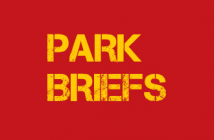There is a saying in the business world: “What gets measured gets managed.” That means it is important to know what aspects of business you should be tracking on a regular basis. Metrics, also known as Key Performance Indicators (KPIs), are vitally important numbers for you to know about your adventure business. These figures will say a lot about the strength of your business and provide insight on the areas that need your attention.
The following ten metrics are some of the most critical for you to know right away. Once you get a handle on tracking these metrics, you can always dig a little deeper and find some new ones to track. Start tracking these 10 now. Or yesterday. Last year would be even better…
The Big Three
1. Sales Revenue
This metric can almost go without saying. Almost. I often talk to business owners who cannot tell me what their sales revenue was yesterday, last week, last month, or even last year! A common phrase that I hear is, “I’m not sure of the numbers, but I know that we were up!” Sure you do…
Sales revenue is your total income from your sales of tickets, photography, concessions, retail items, and anything else your customers buy from you. It does not include things like interest income.
This should be the easiest metric for you to track, and you can do it on a daily basis. I would look at this figure on a monthly and annual basis as well. Seriously, if you’re freaking out about all of this data collection, start with this one first and then you can work on the rest after you see what level of insight this gives you into your business.
2. Expenses
This one, too, almost goes without saying. Include all your operating costs: payroll, workers’ comp, liability insurance, utilities, equipment, supplies, rent/lease payments, accessories, whatever it costs to run your business.
3. Net Profit
Now that you have tracked sales revenue, it’s time to find out what you have left after you pay all of your expenses. This can be a real eye opener if you haven’t been tracking your financials for a while. Or at all. Here’s the formula:
Sales Revenue – Expenses = Net Profit
In layman’s terms it’s all of the money you took in, minus all of the money that went out. What’s left over is your net profit. This number is typically expressed as a percentage. Here’s an example of the math: $1,000,000 in sales – $750,000 in expenses = $250,000, or 25% net profit.
Track this metric monthly, not just annually. Your business, whether it’s outdoor or indoor, will have seasonal fluctuations. Keeping track of your profit (how much money you’re keeping, or loss (how much money you’re losing) on a month-to-month basis will help you identify the seasonal trends of your operation. This can also inform you of when you need to boost your marketing, in order to compensate for slow periods of your business, and when you need to adjust staffing levels.
Other Important Metrics
4. Overall Cost Per Customer
This metric is important to know, because it will tell you the bare minimum you can charge for your ticket before you start to lose money. We have a client who, after a very wet spring, was way under his projected revenue for the start of the year. He panicked and offered a 50% discount on tickets to boost ridership at their tour. It worked! They had more people show up and ended up matching their visitor numbers from the previous years, despite the slow start.
Yet somehow, they ended up losing money for the year.
When we were called in to diagnose what had happened, we calculated that their cost per rider was $57. The problem? They were charging $50 per ticket. That meant that they lost $7 on every rider they had, which turned out to be a costly mistake.
The formula:
Overall Expenses / Total Customers = Overall Cost Per Customer
If you don’t know what your cost per client is, this metric could save you some serious headaches (and cash!) down the road.
5. Staffing Cost per Customer
Personnel costs are an area that can quickly get out of control. This often happens when you use higher-cost employees for lower cost activities—like using guides to do landscaping. Calculating your cost of staffing per rider is a great metric to use on a monthly basis, and a great way to quickly get your staffing costs under control. Here’s the math:
Total Staffing Costs (include payroll taxes in this figure) / Total Customers = Staffing Cost per Customer
6. Ancillary Sales per Customer
This is where we track how much of our sales are derived from sources other than ticket sales. Ancillary sales include photography, retail items, concessions, and gear rental. If you know that ancillary sales are a major part of your revenue (or could be, if you paid more attention to them), take this a bit further and track each of these categories individually. That will help pinpoint where you have the greatest potential to increase ancillary sales.
Total Ancillary Sales / Total Customers = Ancillary Sales per Customer
7. Customer Return Rate
How often are customers coming back to your business? We like to calculate this as a percentage of total visitors. For example, if 2,500 out of 10,000 visits are people coming back in the same year to climb in your aerial park, this gives you a 25% return rate. Make sure you have a means for tracking which customers are return guests.
8. ROI of Marketing Tools
You should (in theory) know exactly how much sales volume each of your marketing tools is bringing in. To put things simply, for every $1 that you spend on a marketing tool, you need to be getting more than $1 in revenue. Ideally, you’ll be getting at least three times the amount you’re spending. If you don’t know how much each of your marketing tools are bringing in, you really don’t know what’s working and what’s not.
There are many ways to track your marketing Return on Investment (ROI), and in the Fall 2018 print issue we’ll share more about how to do this. In the meantime, check out “Eight Ways to Drive Revenue,” in the Winter 2018 issue of Adventure Park Insider, which addresses how to assess your online marketing efforts.
9. Cost of Acquisition
If you’ve ever watched the show Shark Tank, you’ve no doubt heart the phrase, “What is your customer acquisition cost?” In other words, how much does it cost you to bring in a new customer? By calculating this metric, you can make better marketing decisions and it will help you when you are budgeting for next season. This formula tells us what it costs on an individual basis:
Marketing Expenses / Visitor Count = Cost of Acquisition
Marketing expenses include your website, Facebook, digital and traditional advertising, and print materials such as brochures.
10. Historical Performance
Metrics can provide you with a quick shot of information, but their true value becomes apparent when you track these figures over time. If you have the data, it’s worth going back to day one and see how your business has evolved over time. You might be surprised with what you discover!
Final Thoughts – Don’t go it alone!
If the word “spreadsheet” automatically induces sleep (or heart palpitations!), fear not. There are plenty of sources out there to help. Whether you seek the advice of a trusted business partner, your bookkeeper, or an outside consultant, there are plenty of people out there who have no problem rolling up their sleeves and diving in.
Even if you’re still not sure, go ahead and start slowly, one metric at a time, and work your way up. Some data is always better than no data, and your future self will thank you for it.
And when in doubt, we’re always here to help! Ask questions in the comments section, or drop us an email.
P.S. These are the type of metrics we’ll be asking you about in the next State of the Industry Report this fall.






